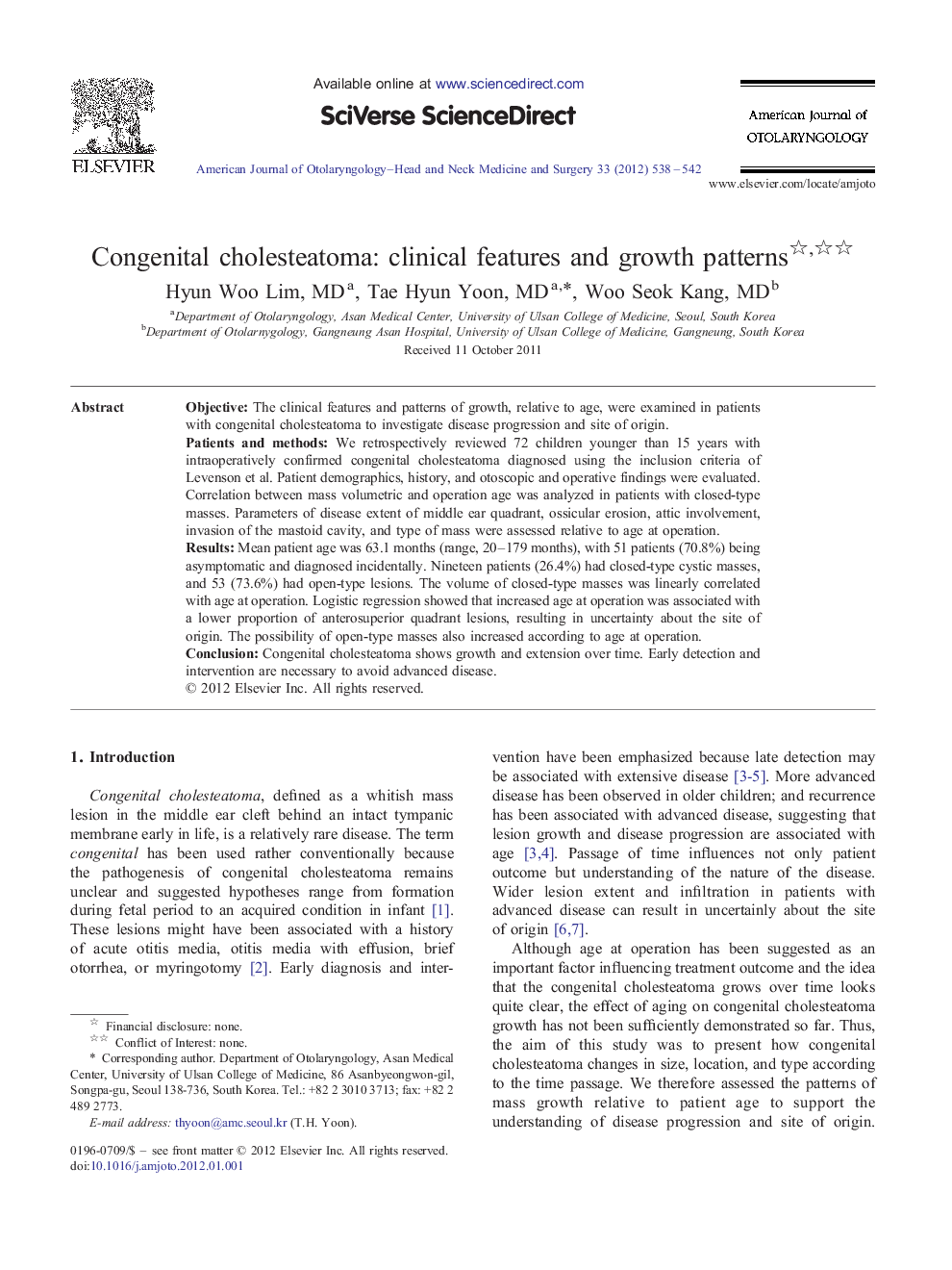| Article ID | Journal | Published Year | Pages | File Type |
|---|---|---|---|---|
| 4103808 | American Journal of Otolaryngology | 2012 | 5 Pages |
ObjectiveThe clinical features and patterns of growth, relative to age, were examined in patients with congenital cholesteatoma to investigate disease progression and site of origin.Patients and methodsWe retrospectively reviewed 72 children younger than 15 years with intraoperatively confirmed congenital cholesteatoma diagnosed using the inclusion criteria of Levenson et al. Patient demographics, history, and otoscopic and operative findings were evaluated. Correlation between mass volumetric and operation age was analyzed in patients with closed-type masses. Parameters of disease extent of middle ear quadrant, ossicular erosion, attic involvement, invasion of the mastoid cavity, and type of mass were assessed relative to age at operation.ResultsMean patient age was 63.1 months (range, 20–179 months), with 51 patients (70.8%) being asymptomatic and diagnosed incidentally. Nineteen patients (26.4%) had closed-type cystic masses, and 53 (73.6%) had open-type lesions. The volume of closed-type masses was linearly correlated with age at operation. Logistic regression showed that increased age at operation was associated with a lower proportion of anterosuperior quadrant lesions, resulting in uncertainty about the site of origin. The possibility of open-type masses also increased according to age at operation.ConclusionCongenital cholesteatoma shows growth and extension over time. Early detection and intervention are necessary to avoid advanced disease.
